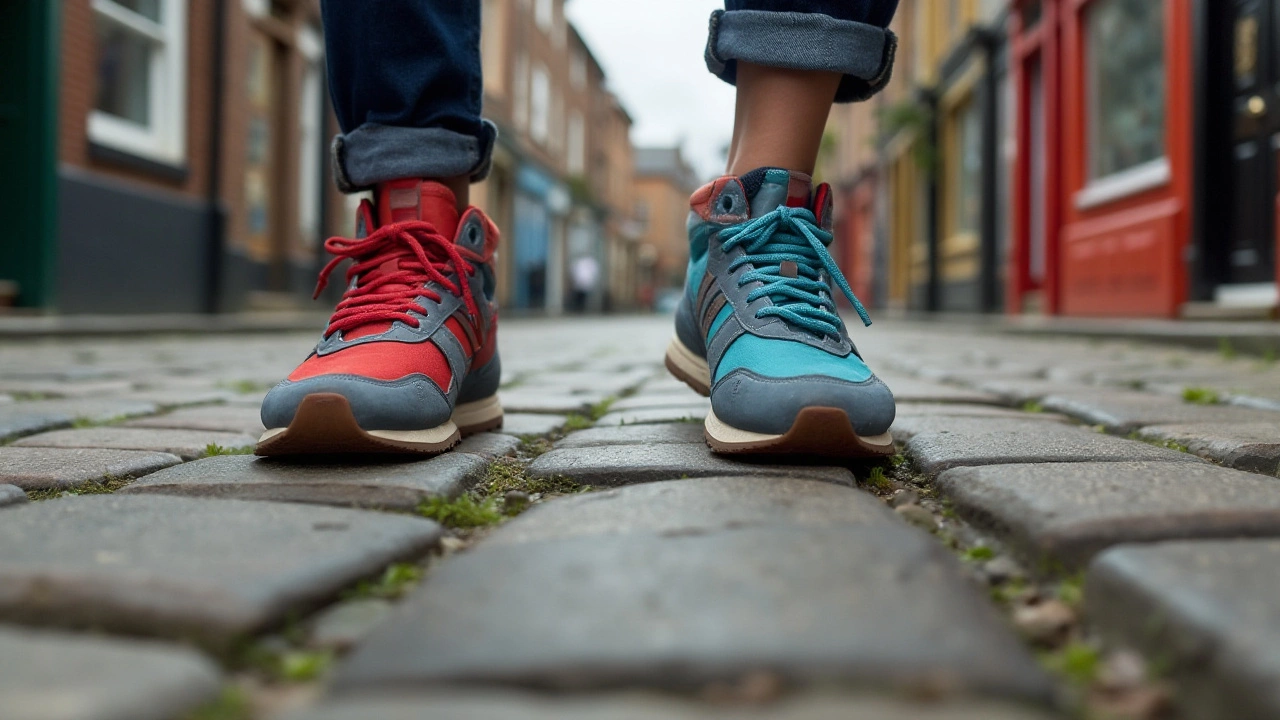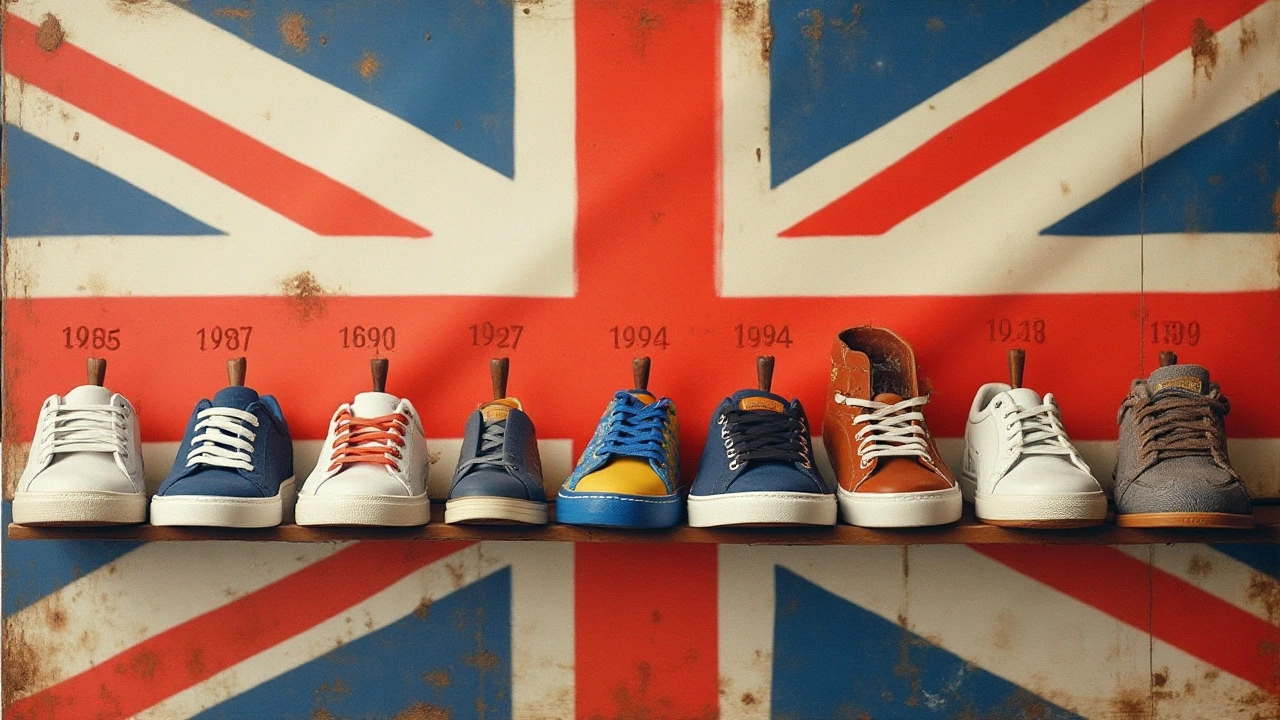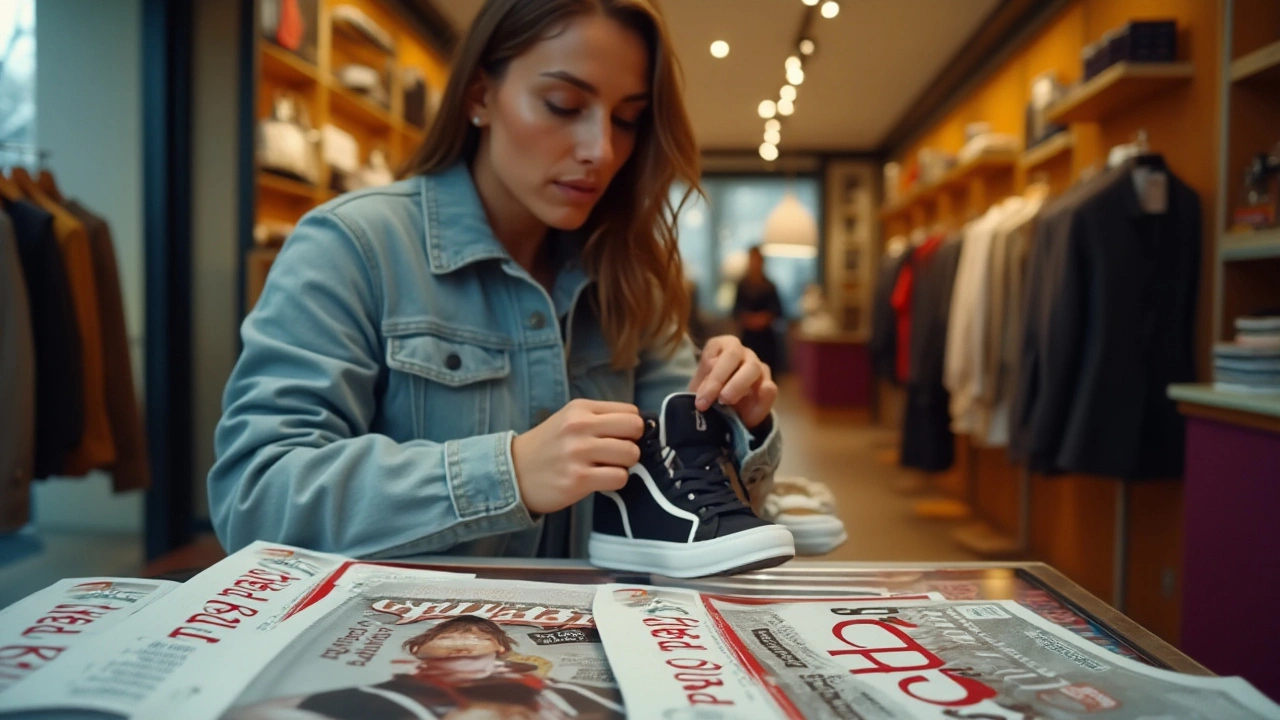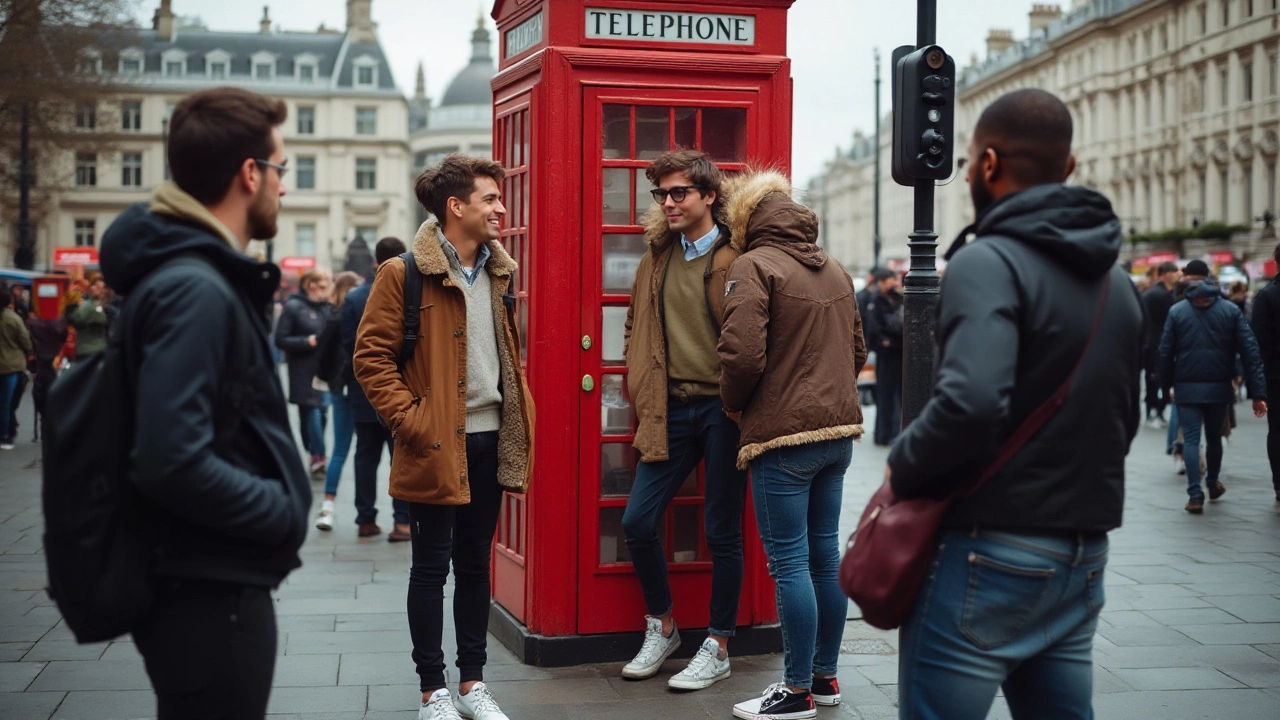Every language has its quirks, and British English is no exception, boasting a lexicon rich with colorful and unique slang. Among these is the term 'trainers', a word that to locals is synonymous with comfort and fashion. However, outside the UK, the term might puzzle those more familiar with the word 'sneakers'.
Understanding linguistic variations not only enriches our vocabulary but also offers a window into the culture embracing these terms. The British love affair with 'trainers' reveals much about their approach to fashion and daily life. Let's lace up and take a closer look at why Brits call them trainers, the cultural significance behind it, and how these shoes have become a staple in wardrobes across the nation.
- Origin of the Term 'Trainers'
- Cultural Impact and Fashion
- Trainers in Everyday British Life
- Global Influence and Trends
Origin of the Term 'Trainers'
There is something fascinating about how a simple word can encapsulate an entire culture's relationship with an object. In the case of the British slang term 'trainers', we see this very phenomenon. The term has its roots deeply entwined with historical and athletic significance, reflecting how language and society evolve hand in hand. The story of the term 'trainers' is about more than just a name; it's about a societal embrace of leisure and physical activity at a time when the world was rapidly modernizing.
Originally, in the early 20th century, what we now call trainers were first crafted in the United States. Back then, these lightweight athletic shoes were primarily designed for sports. As organized sports became a popular pastime, so did the need for footwear that offered both support and traction. By the mid-20th century, this style of shoe crossed the Atlantic, making its way into the United Kingdom where its purpose started to expand beyond just athletic endeavors. It was during this time that the term 'trainers' began to form in the British vernacular, representing a new, active way of life.
The term itself is believed to have originated from the word 'training shoes'. These shoes were initially marketed for those in training for sports – hence the name. As they gained popularity, manufacturers began using 'trainers' as a catchier and more marketable term. The word quickly became ingrained in British English, further aligning itself with the burgeoning trends of casual wear and street fashion that dominated the second half of the 20th century. As teenagers of the 60s and 70s began to adopt trainers not just for sports but as everyday footwear, the term solidified its place in British culture.
Interestingly, the adoption of the term is intertwined with the cultural shifts happening within the UK. The post-war era saw a rise in the working and middle classes engaging in leisure and recreational activities. With more disposable income and time for hobbies, people naturally gravitated towards comfortable but stylish footwear options. A testament to this is seen in the words of noted British footwear expert, John McQueen, who said,
"Trainers provided not only a departure from the formal shoes of the past but also an expression of individuality and modernity that resonated with the youth."
Statistics from the latter half of the century show a marked increase in the production and import of trainers in the UK, reflecting their growing popularity. This boom was not just a fleeting trend but one that has entrenched itself into the fashion and cultural identity of Britain. Today, trainers are a staple in almost every British household, symbolizing an enduring legacy that began on the playing fields and has journeyed to the bustling streets of British cities.

Cultural Impact and Fashion
The term trainers resonates deeply within British culture, more than just a casual reference to footwear. These shoes have marked their territory not only as an essential piece of clothing in the UK but also as a symbol of a broader social identity and cultural movement. From the iconic football terraces of the 1980s, where die-hard fans decked out in their favorite teams' colors paired their jerseys with the latest must-have trainers, these shoes became a statement of style and allegiance. This association amplified the rise of the 'casual' subculture, which helped elevate trainers into fashion icons on the streets of Britain, specific to each new trend that emerged.
The integration of trainers into mainstream fashion owes itself greatly to influential British figures who have stomped the public scene donning this versatile footwear. Public attention can be likened to the frenzy seen when Britpop surged in the 90s. Bands like Oasis and Blur did more than rock the charts; they turned trainers into emblems of cool by sporting them at concerts and in music videos, thereby engraving them into the fashion consciousness of an entire nation. Trainers in Britain weren’t just shoes; they collaborated with the concept of British fashion itself.
British designers also recognized the fluid dynamic between trainers and high fashion. Esteemed names such as Alexander McQueen have embroidered their creative tapestry upon trainers, transforming them into luxury statements. These collaborations have redefined the aesthetics of trainers, integrating high-end materials and groundbreaking designs. In recent years, no fashion week would seem complete without the presence of sleek trainers gracing the catwalk, echoing the sentiment that casualwear can blend harmoniously with couture. As trainers traverse through different fashion eras, their impact remains robust, speaking to evolving styles yet grounding us in their functional allure.
Remarkably, the diversity within trainer trends illustrates their adaptability in capturing the zeitgeist of different decades. From their introduction as technical sporting gear, they grew into vibrant canvases for expression and bold experimentation. It's not unusual to witness trainers today festooned with bright colors capturing the vitality of streetwear culture or showcasing minimalist elegance with their monochromatic tones, aligning perfectly with modern tastes. British trainers have even influenced global trends, with brands incorporating elements inspired by this oscillating cultural heritage into their own designs.
Across time, trainers have become both the product and the catalyst of a cultural dialogue that reflects changing attitudes towards fashion and lifestyle. As they continue to evolve, trainers embrace their role as purveyors of both comfort and modern styling, positioning them securely in the future of fashion. To quote the fashion icon Vivienne Westwood, "Fashion is very important. It is life-enhancing and, like everything that gives pleasure, it is worth doing well." The enduring relationship between the British and their trainers captures this sentiment perfectly, embodying a seamless blend of passion for fashion and cultural pride.

Trainers in Everyday British Life
In the rhythmic hustle and bustle of British daily life, a pair of trainers is more than just a piece of footwear; it’s a companion that fits seamlessly into various scenarios, embracing practicality and style. Walk down any British high street, and you’ll cross paths with a myriad of trainer styles, each telling a story of its own. It’s not just about going for a jog in the park or hitting the gym; trainers have transcended their athletic origins.
Once confined to the realm of sports, trainers have steadily journeyed into the heart of British fashion. People pair them with suits for a chic office look, or match them with casual jeans for relaxed weekends. This versatility is a testament to how deeply ingrained trainers are in the culture. They reflect a shift towards comfort-driven style without compromising on aesthetics. As British life moves fast, so must its footwear, and trainers meet this need quite splendidly. A pair of classic white trainers, for instance, is seen as a staple — it's often said that they go with almost anything: from colorful dresses to sharp trousers.
Trainers have also found their niche in the world of British youth culture. The influence of music, especially with genres like Grime and Hip-Hop, showcases trainers as symbols of status and identity. Iconic British artists often feature in brand collaborations, bringing tailored designs that echo the streets of London. This speaks to the trainers’ symbolic role, marking them as a canvas for creativity and expression. According to Daniel Harris, a well-known British designer, "In the world of fashion, trainers are the great unifier - everyone needs a pair, everyone wears a pair, and they're a piece that allows each person to project their unique style."
Let's not forget the practical side. The UK's temperamental weather often calls for reliable footwear. Here is where trainers muscle their way through. Heavily opted for city walking and commuting, they boast endurance against drizzle and the wear and tear of urban pavements. Sold in millions each year, their popularity remains indisputable. A 2023 survey revealed that nearly 65% of Brits own more than two pairs of trainers, highlighting their role beyond simple function to a culturally significant fashion choice.
The popularity of trainers has led to a diversification in their design. Gone are the days when only black or white options were available. Today's market is flooded with choices — vibrant colors, interesting textures, and innovative designs make each pair unique. It caters to varied tastes, allowing the UK's diverse population to find a match that suits their style. Not just limited to men, women and children also have a vast array of options, signifying their widespread appeal across demographics.
In short, trainers in Britain are not just about footwear; they're a symbol of the zeitgeist, reflective of Britain's identity in motion. They blend casual elegance with a pragmatic edge, making them a beloved favorite. And like a loyal friend, they are always ready to support the fast-paced rhythm of life across the British Isles.

Global Influence and Trends
The journey of trainers from a simple piece of athletic gear to an international fashion statement is nothing short of fascinating. Originally designed for sports, these versatile shoes have leaped from the running tracks and gym floors to the high streets and fashion runways worldwide. This transformation has been in part fueled by the rise of hip-hop culture in the 1980s and 1990s, where trainers were embraced for their comfort and style. Icons of music and sports alike began endorsing their favorite brands, propelling these shoes into the global limelight. It's hard to overlook the pivotal role played by collaborations between sports brands and celebrities, which have created exclusive and limited edition trainers that caused worldwide frenzy.
What’s intriguing is how trainers have transcended cultural boundaries, becoming an integral component of streetwear and high fashion alike. The global appetite for these everyday essentials shows no signs of waning, with markets in Asia, America, and Europe constantly evolving. The cross-cultural adoption has been such that a modern wardrobe seems almost incomplete without a pair of trainers styled with jeans, suits, or even dresses. As fashion evolves, we notice an increasing blend of comfort and style statements, with hybrid options such as athleisure campaigns coming to the fore in record numbers. Modern fashion designers often incorporate sleek, sporty elements in their collections, paying homage to the allure of trainers as part of their holistic fashion vision.
Brands are tapping into the global market with a variety of offerings, from sustainable materials to smart technology integrations, such as fitness tracking capabilities. The innovation in design has spurred an interest in customization, allowing consumers to personalize their footwear to reflect individuality. The sustainability trend has particularly captured attention, with manufacturers pushing for eco-friendly production using recycled materials and offering repair services to extend the life of shoes, reducing environmental impact.
The trainers phenomenon reflects broader societal shifts, indicating how we prioritize comfort and sustainability along with aesthetic appeal. According to a report by the NPD Group, the global sportswear market reached a staggering $174 billion in 2023, indicating just how influential trainers have become. The market's growth is driven by increased interest in fitness and wellness, as well as lifestyle shifts post-pandemic where casual and home-centric work attire have gained prominence. As technology advances and fashion continues its unpredictable journey, one can only imagine where the humble trainer will stride next.
"The rise of trainers marks a definitive shift in how the world approaches fashion – it’s not just about looking good but feeling good too," says renowned fashion expert Jane Andrews.

